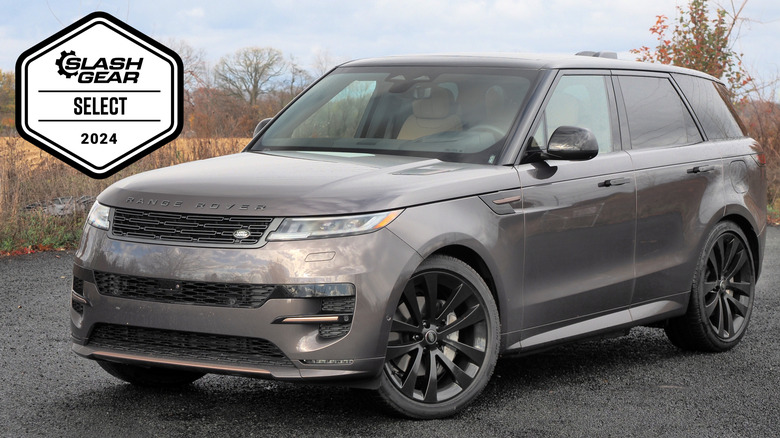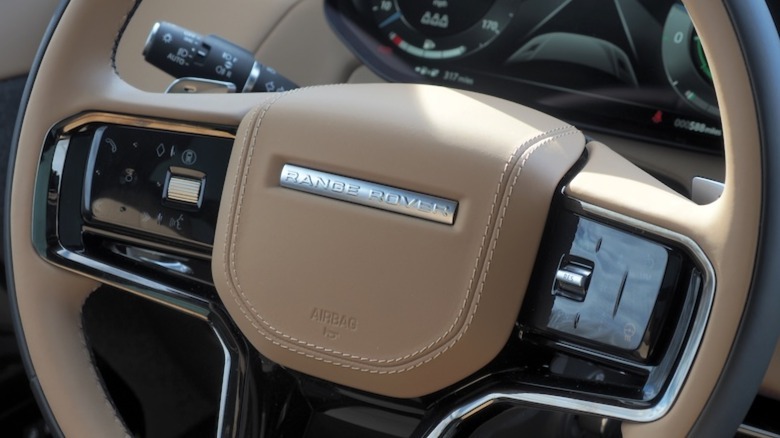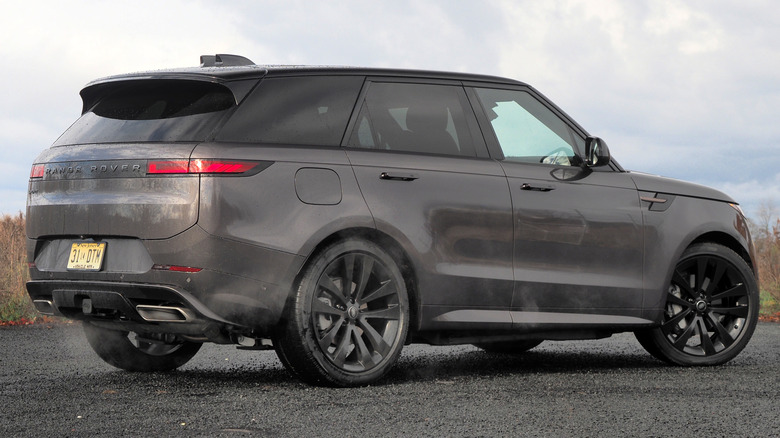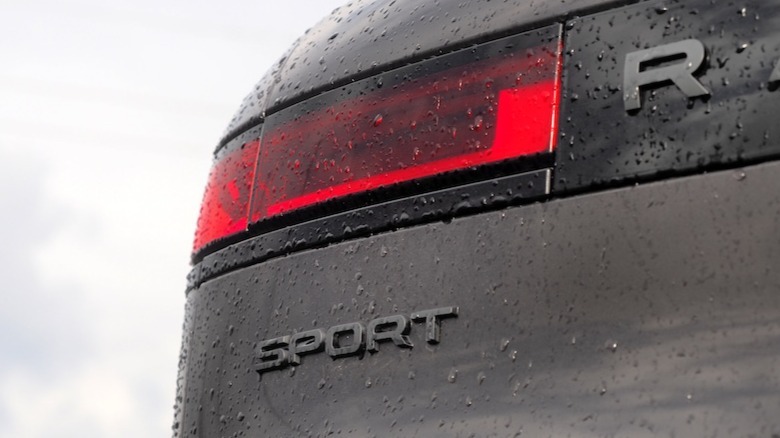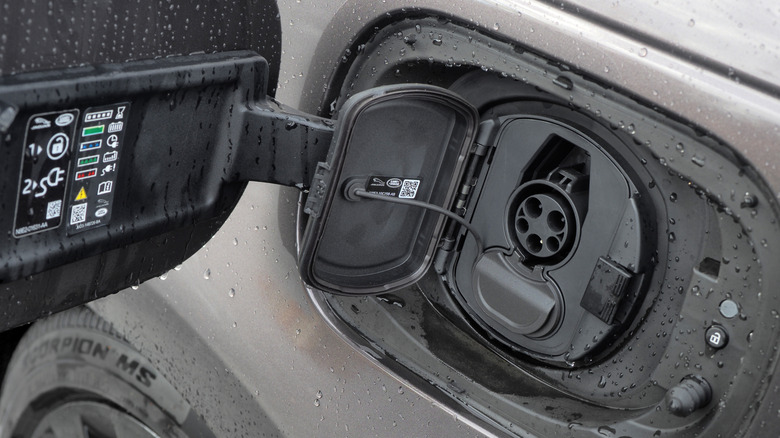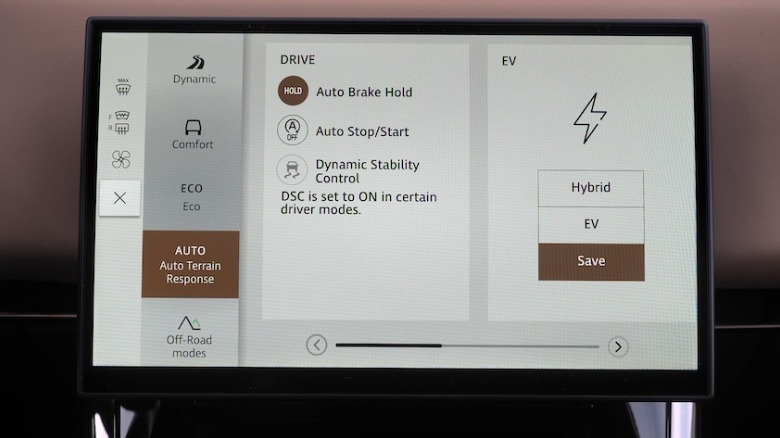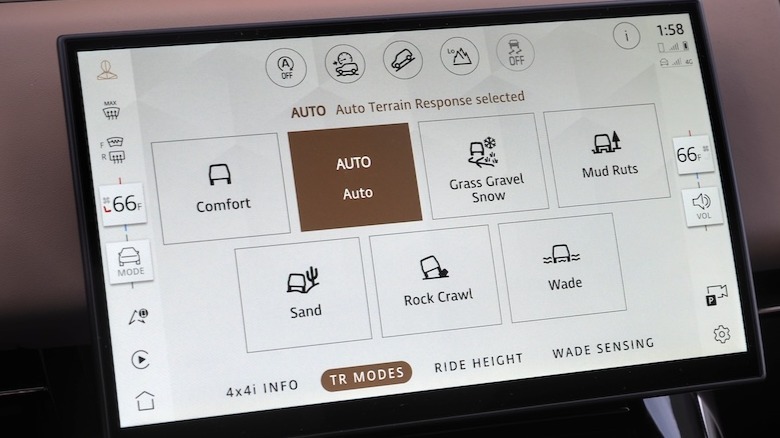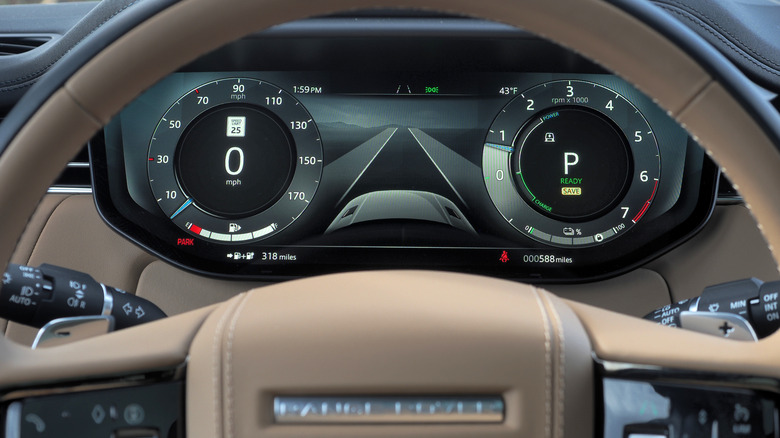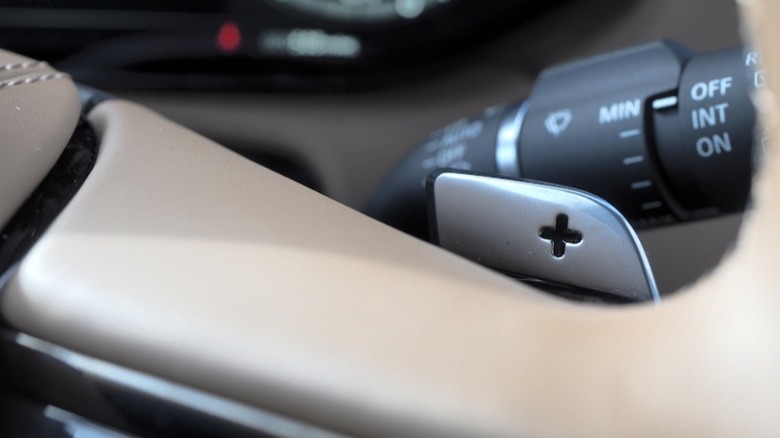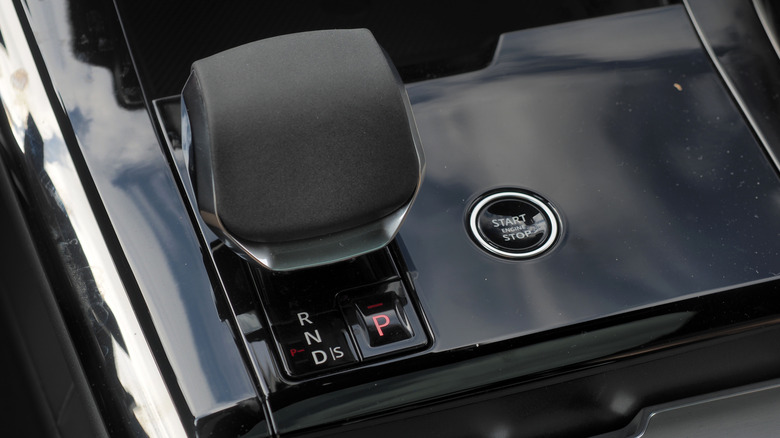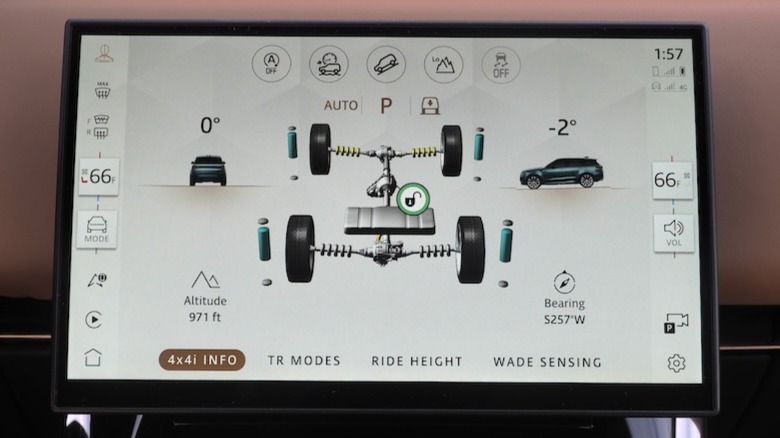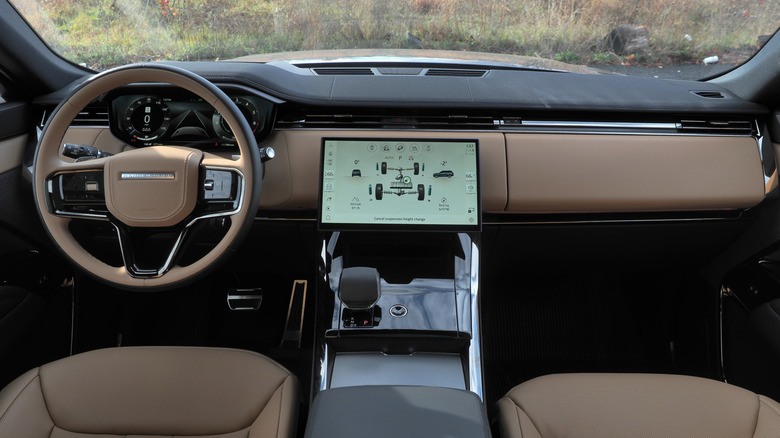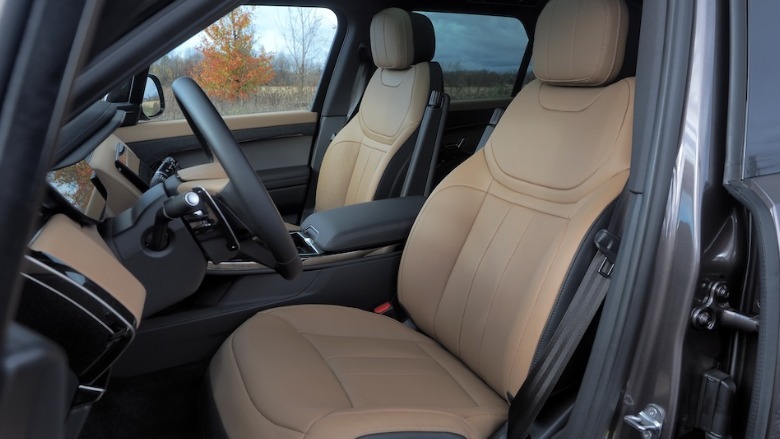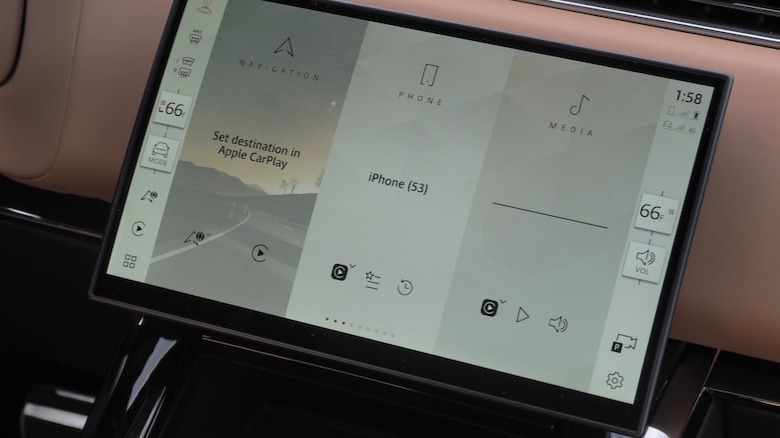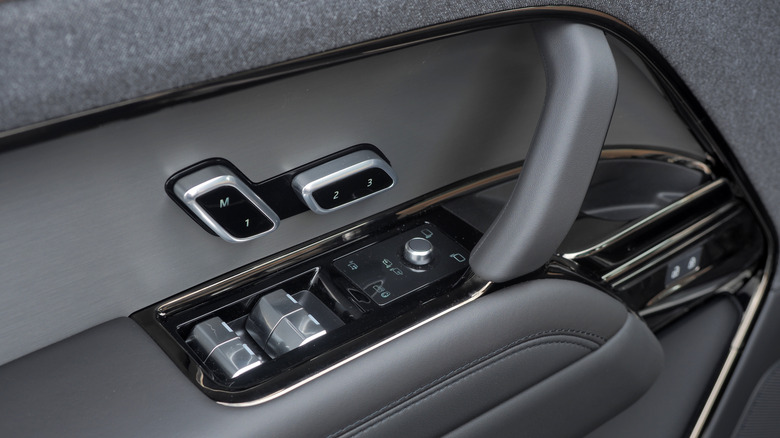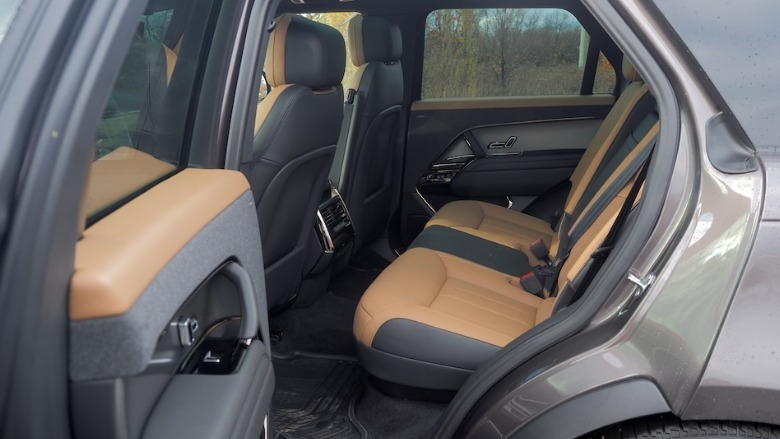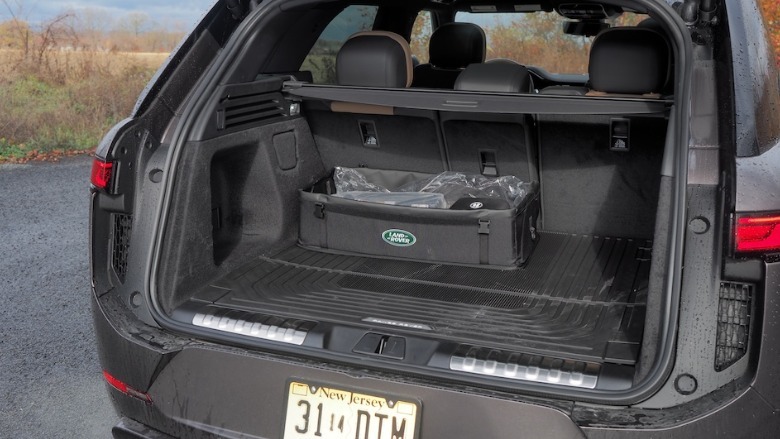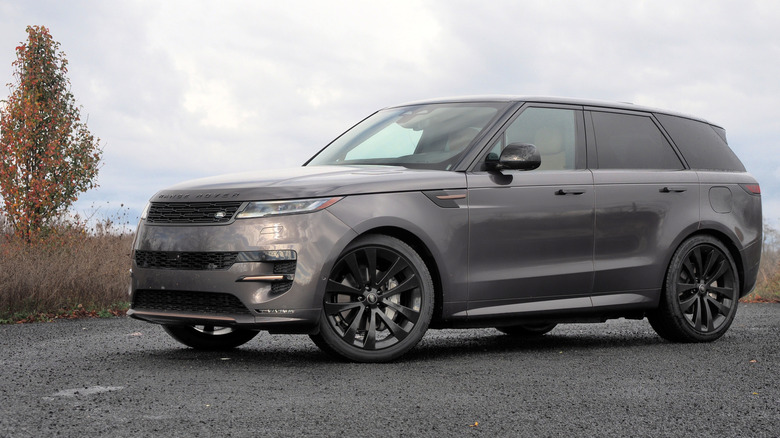2025 Range Rover Sport PHEV Review: Electric Power Only Adds To The Appeal
- Classic looks are great
- Plug-in hybrid drivetrain is smooth and has decent e-range
- Spacious cabin with no shortage of toys
- Expensive, and PHEV only makes it more so
- Needs options to truly live up to "Sport" billing
- Minimalist cabin could do with a few more buttons
Few automakers straddle the worlds of luxury and capability quite so effectively as Range Rover. Its SUVs are fancy enough to hold their own against heavyweights from Porsche, Mercedes-Benz, and BMW, yet boast off-road talents most rivals can only pay lip-service to. What they've never been, though, is all that frugal.
It's a shortcoming the 2025 Range Rover Sport PHEV aims to address. Beneath the more aggressive design, there's a plug-in hybrid drivetrain that promises not only 53 miles of electric-only driving, but better fuel economy when run as a hybrid — all without sacrificing either pace or practicality.
Though it may be slightly smaller than the full-size Range Rover, the price tag for this Sport version is still considerable. While the 2025 Sport starts at $83,700 (plus $1,625 destination) for the SE P360, if you want the P460e plug-in hybrid you're looking at the Dynamic trim and at least $95,100 (plus destination). All-in, this particular car landed at $106,865: on the cusp of the starting price of a regular Range Rover.
Refined styling looks set to age gracefully
Style is subjective, of course, but I'm of the mind that Range Rover's design language for its biggest SUVs is pretty darn slick right now. The most recent revamp smoothed both the Range Rover and the Range Rover Sport into monoliths, somehow managing to straddle a line between being neither bland nor resorting to unnecessary ornamentation. Personally, I think the non-Sport looks the best, but it's a close call.
This particular car, in Dynamic trim, gets $1,750 Charente Gray paint, a $1,000 black contrast roof, and 23-inch wheels for an extra $2,550. Spendy, sure, but they contrast nicely with the copper inlays in the grilles and fenders. The result manages to look equally at home on a farm as pulling up to a high-end hotel, even if I'm not sure I'd want to risk those big wheels off-road. The standard rims are a still-large 21-inches.
The best of gas, the best of electric
Range Rover's plug-in hybrid drivetrain starts with an 3.0-liter inline-six gas engine, pairing it with a 160 kW electric motor. The result is 454 horsepower and 487 lb-ft of torque: a far cry from the hefty 626 horses of the Sport SV's 4.4-liter V8, certainly, but a neat uptick from the 395 hp of the entry P360 mild-hybrid.
Unlike that mild-hybrid, the PHEV can drive on electric power alone. There's an EPA rating of 53 miles before the gas engine need kick in, though I found I needed a light foot in order to get anywhere close to that. Alternatively, you can get the entirety of the drivetrain's power in Hybrid mode, which leaves the SUV to juggle gas and electric as it sees fit. A "Save" option holds any remaining charge.
As in the automaker's other models, there's a whole bevy of drive modes to choose between, for both on- and off-road use. Dynamic, Eco, Comfort, and Auto handle the former — tweaking things like throttle response along with the stiffness of the adaptive air suspension — while the latter tailors things for grass/gravel/snow, mud ruts, sand, rock crawling, and wading. A dedicated status page for off-roading makes it easy to lock the twin-speed transfer case.
Off-road capable, if you dare
Are most — or indeed any — Range Rover Sport owners going to actually take their big, plus hybrid out into the wilderness? Perhaps not, though it's not like the automaker could afford to sacrifice such talents there if it wanted to maintain its reputation. On the road, the big SUV whooshes nicely, every bit the plutocrat's rocket. Even in Comfort mode, leaning into the gas pedal sees the rear end hunker down slightly before you surge forward.
Sweeping corners are handled with more grace than tighter turns, which comes as little surprise. All-wheel steering can be added as part of the Stormer Handling Pack, which for $7,185 also includes brake-based torque vectoring, an electronic active rear diff, and the balance-bringing Dynamic Response Pro system for the air springs.
The air suspension can lower the Sport to be slightly less of an aero brick, though there's definitely the sense that Range Rover's preferred strategy here is "throw power at it." In Dynamic mode, with both electric and ICE in cahoots, the blend of the two is just swell — 0-60 mph lands in 5.3 seconds — while the 8-speed transmission is agile enough to leave you frustrated you don't really need to play with the metal paddle-shifters yourself.
A rare surprise beneath the charge port flap
With the battery depleted, there's occasionally a little lag if you hit the accelerator: almost as though the Range Rover expects the electric side of the drivetrain to be shouldering more of the effort, and then belatedly demands a downshift and the gas engine weighing in. It's only really noticeable because usually the blend of power sources is so harmonious. On that topic, while the engine note isn't bad, a little more grown-up growl in Dynamic mode wouldn't go amiss.
While the PHEV's battery will top up via regenerative braking, most people will reach for a charger. Unusual for a plug-in hybrid, there's support not only for Level 1/2 charging — figure on about four hours to go from flat to full on a Level 2 home wallbox — but DC fast charging, too.
While that maxes out at 50 kW, a far cry from the rates most full EVs can handle, it does mean an 80% top-up in under an hour. More importantly, with most public chargers on (or near) highways designed for DC fast charging — and with Level 3-capable plugs that the majority of PHEVs aren't compatible with — the Range Rover's compatibility makes it far more flexible. And, for that matter, makes it a little more likely you'll get closer to the 53 MPGe rating for hybrid operation (versus the far less impressive 21 mpg combined it's EPA rated for gas-only).
The cabin is as restrained as the outside
Range Rover's cabin is no bad place to sit and wait for that charge to finish, either. As with the exterior, the overall theme is pared-back restraint. The vast majority of controls have been absorbed into a gently curved 13.1-inch touchscreen, with a digital cluster for the driver, and a smattering of backlit buttons on the steering wheel.
That leaves plenty of space for sweeping soft-touch material, a pair of glove compartments, and a useful double-layer center console bin. For the most part, the materials fit the price tag: the seat adjustment controls are chunky and tactile; the door handles slabs are made of cool metal; and the Windsor leather seats — paired here with the extended hide package — are comfortable and supportive. Only the glossy black trim in the center, and a slightly lightweight-feeling transmission selector, let the side down a little.
For the most part, Range Rover's Pivi Pro infotainment is easy to understand. The main view is flanked by shortcuts for climate control including heated/ventilated seats, drive mode, and volume; a panel-based home screen shows different panes for media, off-roading, wireless Apple CarPlay/Android Auto, and the like. Tapping through brings up individual icons for things like low-traction launch, the EV settings, and more.
There's room for a little switchgear, please
On the move, though, I found myself wishing Range Rover's commitment to minimalism hadn't been quite so thorough. As in the smaller Velar, it's not like there's room lacking for a physical volume knob for the excellent (and standard) Meridian audio system, or a drive mode dial, the two things I found myself reaching for most often. In the rear, meanwhile, though there's plenty of leg and headroom, and the power-reclining heated seats are great, the fact that this Dynamic trim topped out at dual-zone climate control seemed like an odd decision.
Behind that second row, the trunk's 31.9 cu-ft. of cargo space lands almost 5 cu-ft. ahead of a Porsche Cayenne. Drop the rear seats, though, and the advantage flips: the Range Rover Sport manages 53 cu-ft. behind the first row versus the Cayenne's 60.3 cu-ft. Buttons in the trunk make it easy to lower the Sport's rear seats, and to raise or lower the air suspension.
As for safety tech, a 360-degree camera, blind spot and lane-keep assistance, front and rear parking sensors, and adaptive cruise control with steering-assist are all standard.
2025 Range Rover Sport PHEV Verdict
Tell a car enthusiast you're thinking of buying a Range Rover — any Range Rover — and the conversation will inevitably turn to reliability. While few would deny they're handsome and capable SUVs, there's a (not really unfair) reputation for being finicky with it. While I had no issues in my week-long stint with the Range Rover Sport PHEV, that's a far cry from years of ownership.
Range Rover counters concerns with 4 year / 50,000 mile limited warranty (plus roadside assistance for the same duration), and a 6 year / unlimited mileage corrosion warranty. That's on a par with Mercedes, BMW, and Porsche.
Even with that question mark dangling, though, it's hard not to fall for the 2025 Range Rover Sport PHEV's charms. Stylish, serene to drive, and with a smooth — yet spirited — electrified drivetrain, it combines some of the best features of EVs with the fuel-up-anywhere reassurance of a gas engine.
